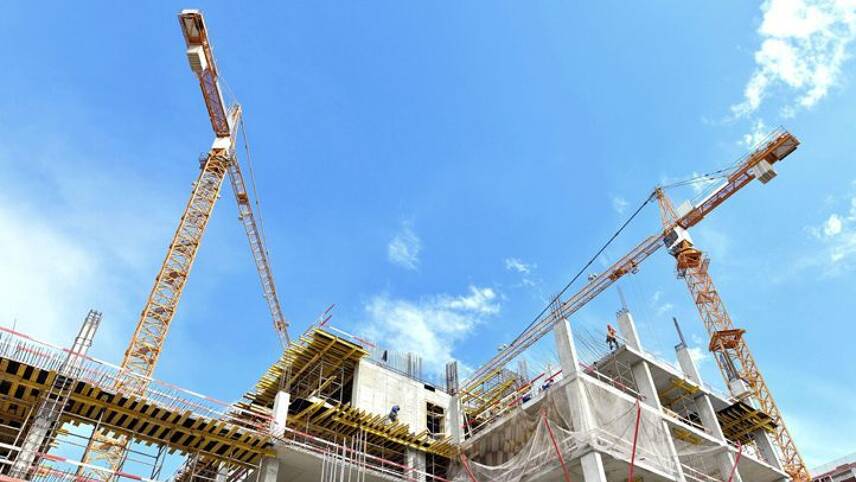Register for free and continue reading
Join our growing army of changemakers and get unlimited access to our premium content

At the start of this year, Chris Skidmore MP stimulated a change of momentum when it came to pursuing net zero. His comprehensive Net Zero Review made a compelling case that “there is no future economy but a green economy”, with sensible and far-reaching recommendations to help the UK achieve “the growth opportunity of the 21st century”.
The ultimate aim of the strategy is to help the UK deliver net zero by 2050 – but the government’s own climate advisers continue to warn that progress is too slow. Among its 129 recommendations which reframed the economic case for net-zero, Skidmore’s review explored how businesses can be better supported to deliver net zero, how the UK makes better use of infrastructure and how we deliver more energy-efficient homes. As a result, responsibility for driving net zero lies not only with the government, but with industry too.
To help our industry play its part, individuals and organisations will need data-driven tools to help them fulfil their net zero ambitions – and this is where BREEAM comes in. BREEAM is the world’s leading science-based suite of validation and certification systems for a sustainable built environment. There are BREEAM schemes dedicated to New Construction, Refurbishment & Fit Out, In-use, Communities and Infrastructure. In more than thirty years since BREEAM was first launched in 1990, we’ve seen our customers’ attitudes and priorities change, and regular updates to BREEAM have reflected those shifts.
Bringing BREEAM up to speed
Now we’re preparing ourselves for the launch of BREEAM Version 7 (V7) at the start of 2024. To start with, it’s worth summarising what’s new about the updated framework. V7 will ensure the metrics we use to measure carbon are consistent across both operational and embodied carbon, therefore helping our customers on their journey to net zero carbon.
As V7 represents the first time BRE has embarked on a modular update across multiple BREEAM platforms (New Construction, In-Use, and Refurbishment and Fit Out) at the same time, we’ve done things a little differently and have chosen to consult the wider industry at an earlier stage of the process to ensure their Net Zero Carbon (NZC) priorities are front and centre in the new framework.
We know the construction industry is now much more focused on embodied carbon and understands that it’s not just about how a building is performing in operation, but also about the carbon associated with the materials and construction processes used throughout the lifecycle of that building. By seeking the views of the industry at an earlier stage, open consultations like these allow us to develop BREEAM in line with our customers’ exact needs and ambitions.
Economic benefits come with environmental improvements
These ambitions are not only influenced by a desire to support the UK’s net zero mission, but through a growing recognition of the significant economic benefits that come with construction projects having strong green credentials.
Buildings that demonstrate first-rate sustainability considerations have become an integral part of modern investors’ checklists and decision-making processes. This is why we see it as our responsibility to ensure that BREEAM reflects the latest developments in net zero science and regulations so that our customers can drive their sustainability projects beyond best practice, while feeling confident their sustainability goals will be met.
As a result, our focus has been to develop V7 so that it is also a valuable tool for investors in assessing the climate risk of a building. Helping investors in this way will also support building owners and operators to set benchmarks for their carbon emissions. As certifications like BREEAM are also increasingly required by central and local authorities, this will also contribute further to meeting our national net zero targets.
The role of consistent metrics in unlocking access to quality data
Alongside building owners and operators, local authorities will also be expected to play a big role in decarbonising the domestic and commercial buildings in their area. Limited access to quality data, which helps to identify buildings in need of improvement, has often been cited as a major roadblock to local authorities’ decarbonisation efforts.
To help unlock access to such data, BRE has proposed that the ‘consistent’ metric used in V7 is kilograms of carbon dioxide equivalent per square metre per year – though the consultation also seeks feedback on other proposed metrics. Agreeing a standardised metric that runs throughout the framework will help produce comprehensive data showing how a building is actually performing, meaning that the transparency of its performance can be shared across various localities and help to inform other similar projects.
With our public consultation closing on 30th June, we’re looking forward to collating all the feedback and using it to produce an updated BREEAM framework that meets the needs and priorities of our customers. We know that people come to us because they trust our expertise and methods, and we are focused on ensuring V7 plays its part in supporting organisations’ net-zero ambitions.



Please login or Register to leave a comment.